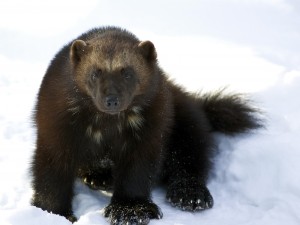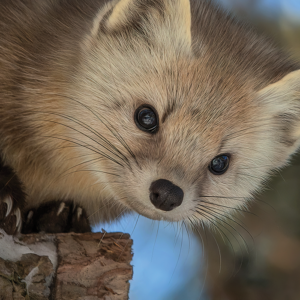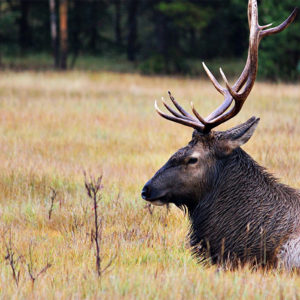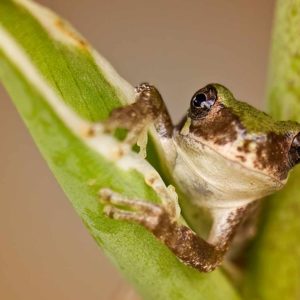Seven Animals You Can Find in Canada
This blog is written by Toby Dean who works on behalf of londonschoolofphotography.com in outreach and content creation and edited by John Stuart.
Canada is not only home to breath-taking landscapes, but it also hosts more than 400 bird species, around 200 mammal species and an extremely diverse oceanic life. Read on to discover seven beautiful animals found in Canada.
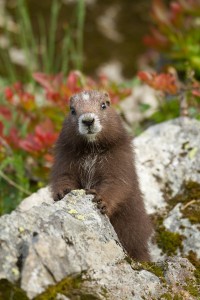
1. Vancouver Island Marmot
These large squirrels live in mountainous areas as they prefer burrows. The Vancouver Island Marmot can only be found on the Vancouver Island in British Columbia. This species is bigger than others and can weigh as much as seven kilograms and measure between 60 – 70 cm. As one of the rarest animals on the planet, the Vancouver Island Marmot is now part of a recovery program aimed at increasing the marmot count. Marmots are herbivores and hibernate for almost three quarters of the year, from late September to April or May. You can learn more about this species here.
2. Wolverine
The Wolverine is a small solitary carnivore animal that can kill prey much larger than itself. Wolverines are mainly scavengers. They follow wolf trails in order to scavenge the remains of their prey. They are known as ferocious and opportunistic, as well, this animal can be found in forests at high altitudes.
3. Eastern Cougar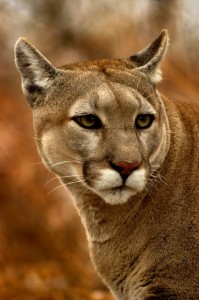
The Eastern Cougar is also known as the puma or the mountain lion. This beautiful and ferocious feline is notorious for stalking and ambushing its prey. Eastern Cougars main prey is the White-tailed Deer. Agile and slender, the species is capable of leaping more than six meters. They are solitary animals and can travel extremely long distances to search for prey. The cougar is very territorial and will avoid other felines.
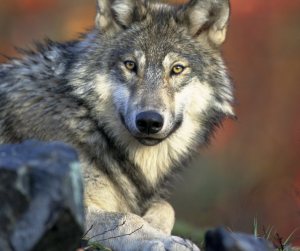 4. Grey Wolf
4. Grey Wolf
Grey Wolves have fascinated humans for a long time. They vary in color and can be all-white or gray and black. Grey Wolves live in packs with a well-established hierarchy and are great hunters. They eat small prey such as rabbits and larger animals such as moose and elk. A pack of gray wolves usually has between seven to eight animals. They travel, live and hunt in packs. Each pack includes an alpha male and female (the father and mother) and their offspring. The alphas are in charge of tracking prey and establishing the territory.
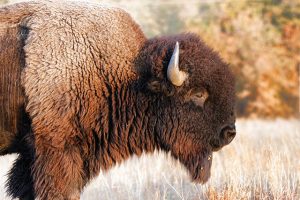
American Bison. Flickr photo by Larry Smith (CC BY 2.0)
5. Bison
Bison feed on sedges and grasses. They were on the brink of extinction in the 19th century but their numbers are now growing due to conservation efforts. Since they rely heavily on grazing, Bison had an important role in the past. They created the perfect environment for plants and animals to flourish. Wild Bison don’t have many predators, however they can be attacked and taken down by packs of wolves, coyotes, grizzlies or brown bears.
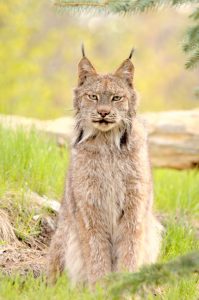 6. Canada Lynx
6. Canada Lynx
This is a medium-sized feline with a bobbed tail, extra-long ear tufts and large paws that help them walk in deep snow. The Canada Lynx can be found in moist, borest forests where it thrives thanks to its long legs and thick fur. they resemble similarities to Bobcats but it is easily distinguished by the length of the tufts. Lynx feed mostly on Snowshoe Hares but also on squirrels, carrion and mice. They prefer dense forests that serve as shelter. As solitary animals, they travel and hunt alone. They are mostly nocturnal animals and like to hunt by walking and chasing their prey.
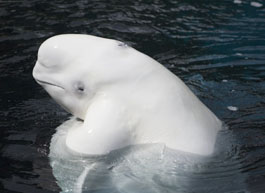 7. Beluga Whale
7. Beluga Whale
Beluga Whales are social animals known as opportunistic feeders. They eat anything from Salmon, Rainbow Sole and Arctic Cod to crabs, snails, mussels and octopus. Belugas are never solitary and they congregate in groups that can be as small as two to three or as large as a few hundred. They communicate with each other using whistles and clicks. Belugas can dive to depths of up to 700 meters but they usually forage for food at depths of 300 meters. Their gestation period lasts 15 months and they give birth to one calf at a time.
Spotting these seven animals in the wild can be rare. As a photographer, when they do show up, you have to be quick on your feet to snap the perfect pictures. If you’re travelling to find these animals and to take photos of them, you should be well-prepared and informed. To perfect your photography skills before the journey, consider attending a professional photography workshop that will give you the needed tips and tricks for photographing wildlife.

